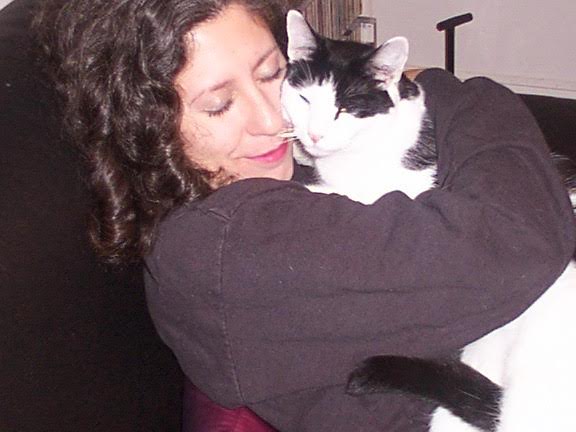 Alexander didn't have a teacher to help him solve his vocal problems. He had no one telling him where to begin or how to approach finding a solution, so he began with simple observation and then experimented on a trial and error basis. One of Alexander's observations and concerns, as he worked for over 60 years teaching people from all walks of life, was the lack of critical reasoning people brought to problem solving. Some of my most effective teaching moments have been when I could help someone see, for themselves, how they were using their body or reacting to a situation.
Alexander didn't have a teacher to help him solve his vocal problems. He had no one telling him where to begin or how to approach finding a solution, so he began with simple observation and then experimented on a trial and error basis. One of Alexander's observations and concerns, as he worked for over 60 years teaching people from all walks of life, was the lack of critical reasoning people brought to problem solving. Some of my most effective teaching moments have been when I could help someone see, for themselves, how they were using their body or reacting to a situation.
Example 1:
This student contacted me for lessons because she was dealing with chronic, debilitating lower back pain, and unbeknownst to me, her doctor has suggested surgery. She never mentioned his recommendation to me (I read about it two years after the fact in the quote below), just her symptoms, at the start of our first lesson.
As soon as she came into the studio, I observed her alignment when standing, I could see why she was in pain. I showed her how she was putting pressure on her lower back by locking her knees and pushing down onto her waist and sacrum. I showed her on the skeleton where her hip joints are; and that her sacrum is not a weight bearing structure, but she was trying to rest her weight on the sacrum as though it was a third leg, putting enormous pressure on her lumbar spine. Within moments, she was able to allow her weight to distribute forward onto her hip joins, and lessen the pressure on her lower back.
"When my doctor suggested surgery to alleviate excruciating back pain from two herniated disks, I remembered a friend who had avoided surgery by working with an Alexander trainer so I tried it too. It's been almost two years since I started working with Brooke and I am virtually pain-free. When I do have pain, it's because I've forgotten to use the Alexander tools Brooke taught me; as soon as I remember to walk properly, the pain goes away. I no longer suffer from terrible lower back pain. My whole body feels less tense and I have fewer muscle aches. Using the Alexander Technique while playing golf, lifting weights or doing any other physical activity has helped prevent injury."
Example 2:
I was presenting the Free Monthly Hands-On Demonstration at ACAT, and as I typically do at the start of the event, I asked participants why they had come. The woman quoted below raised her hand, explaining she was in pain and was looking for tools she could use to reduce her discomfort.
"I asked Brooke about my knee pain and she asked me to get up from the chair and within a few seconds she saw my problem. She had me sit and get up again, this time giving me commands on how to position my legs when getting out of a seated position. I felt the difference immediately and to this day, I use the instructions she had shown me."
I was able to give her simple instructions so she would allow her head and torso to fully transfer over both her feet before she stood up; and to keep herself balanced over both legs as she sat. I could see quite clearly how she was putting undue pressure on her knees by trying to stand when her weight was still behind her feet and legs. Although she was unable to "feel" what she was doing that was contributing to her discomfort, she was able to understand my instructions so she could move differently. As soon as she had this new experience, she understood how to let her weight come onto both her legs.
Example 3:
I am working with a young actress, who shared she is not satisfied with her quality of sleep. After about 5 lessons, she came back and told me she has engaged in a point-by-point investigation into solving the combined issues that were interfering with her sleep. She said she'd solved some of her problems, knew the solution to others and was getting to them; and still had some questions about solving some of the problems. At our lesson last week, she said she was sleeping better already.
Here is her checklist:
1. Sleep Mask—buy one that does not fall off
2. Mattress—switch with neighbor, get a new one
3. Pillows—remove second pillow and get smaller pillow to put under big pillow (both pillow were a lot for me, and one was not enough so I was always struggling with them at night)
4. Glass of Water—Keep at distance far enough that you can't knock over
5. Dogs
6. AC—Keep remote next to you and turn on and off as you please during the night
7. Comforter—Keep yourself cool so you won't get hot under it, ask Michael to push it to your side before he gets in the bed so he does not sleep on it and therefore deprive you of wonderful comforters
8. Michael awake at night
9. Dogs chewing things—before going to bed remove all things that the dogs can reach that you know they will chew on (shoes, pens,etc)
While students who have lessons sometimes have a hard time describing what the Alexander Technique is, or describing the sensations and changes they experience, these examples are a bit more concrete and can help students understand the reasoning process that is an integral aspect of applying the principles of the Alexander Technique.
Ten Questions You Can Ask Yourself To Help You Solve Your Problem
1. How am I doing what I'm doing? Could I do this differently?
2. Am I tensing my neck while I do this?
3. Can I leave my head resting easily on the top of my neck while I do this?
4. Am I breathing?
5. Am I taking full advantage of my weight bearing bones? (spine, pelvis, legs, feet).
6. Is this something I have to do, or can I ask someone else to do this?
7. What is bothering me or making this a challenge?
8. Do I have an experience when this was easier or simpler? What is different now?
9. Do I know everything I need to know about this situation? Or am I assuming things?
10. What step-by-step instructions would I give to someone else if I was teaching her or him to do this?
A simple example from my own life came when I realized I could thread a needle more easily by facing the hole towards my eyes, and bringing the thread from behind the needle into the hole. It is much easier to see. I consider myself a somewhat intelligent person, but I realized how habitual I can be in life, and when I made this simple adjustment (after 38 years of threading a needle "blind" by bringing the thread in sideways) the activity became much easier and more efficient.
[author] [author_image timthumb='on']http://www.acatnyc.org/main/wp-content/uploads/2014/01/Brooke1web.jpg[/author_image] [author_info]N. BROOKE LIEB, Director of Teacher Certification since 2008, received her certification from ACAT in 1989, joined the faculty in 1992. Brooke has presented to 100s of people at numerous conferences, has taught at C. W. Post College, St. Rose College, Kutztown University, Pace University, The Actors Institute, The National Theatre Conservatory at the Denver Center for the Performing Arts, Dennison University, and Wagner College; and has made presentations for the Hospital for Special Surgery, the Scoliosis Foundation, and the Arthritis Foundation; Mercy College and Touro College, Departments of Physical Therapy; and Northern Westchester Hospital. Brooke maintains a teaching practice in NYC, specializing in working with people dealing with pain, back injuries and scoliosis; and performing artists. www.brookelieb.com[/author_info] [/author]

 by Brooke Lieb
The Alexander Technique teaches a robust tool to recognize and address habits, including movement patterns, posture and muscle tone; and thinking and behavioral habits, as well.
by Brooke Lieb
The Alexander Technique teaches a robust tool to recognize and address habits, including movement patterns, posture and muscle tone; and thinking and behavioral habits, as well.
 Alexander didn't have a teacher to help him solve his vocal problems. He had no one telling him where to begin or how to approach finding a solution, so he began with simple observation and then experimented on a trial and error basis.
Alexander didn't have a teacher to help him solve his vocal problems. He had no one telling him where to begin or how to approach finding a solution, so he began with simple observation and then experimented on a trial and error basis.